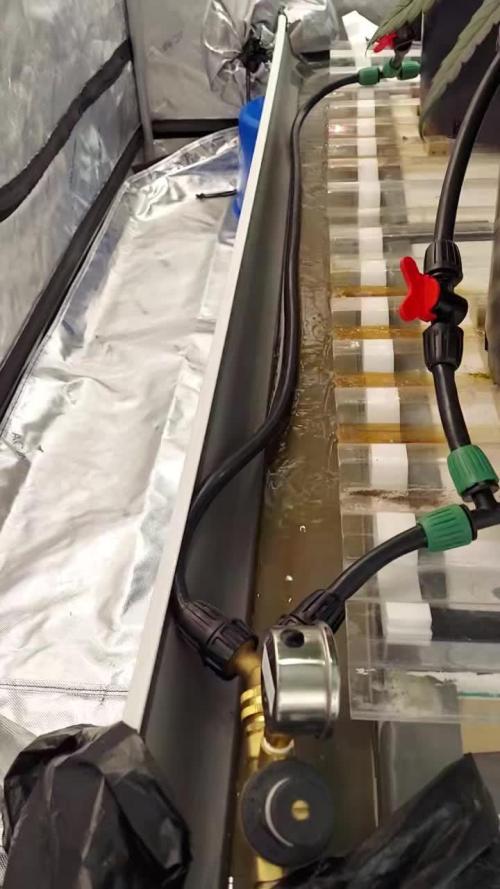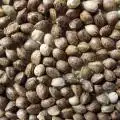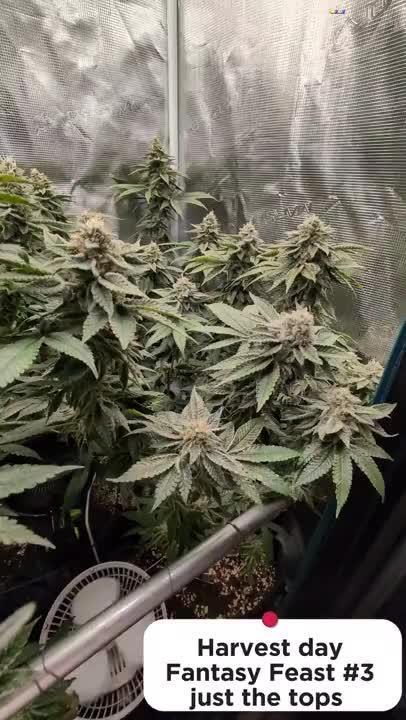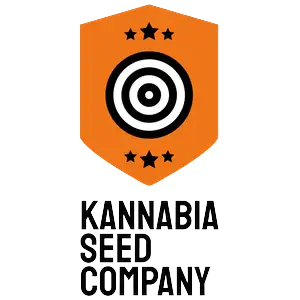The Grow Awards 2026 🏆 































Likes
Comments
Share


@Tropicannibis_Todd
Follow
Alrighty My Friends
I had a blast growing this stuff , everytime I grow this plant its fire 🔥 and its always the same pheno so far , truly amazing 👏 stuff
Nothing but budz on a stick 👌Would not only recommend 😉 but I will go a far as stating this the best smoke I've had grown to date 😋
👉Soil Provided by ProMix.ca
👉Nutrients Provided by Agrogardens
👉Lighting Provided by MarsHydro.ca
Thanks my friends for the great support over the years 🙏 Happy Growing
Likes
11
Share


@Dirtysouthgrower27
Follow
Last week of veg. (For two plants)
Big yield coming soon 🤟🏽🤟🏽🤟🏽
Likes
33
Share


@PatriciaGant
Follow
Dane, We all should help one another.
Human beings are like that.
We should live by each other’s happiness - not by each other’s misery.
We don’t want to hate and despise one another, share the Joint.
And mother earth is rich and can provide for everyone.
We can Grow enough Happiness, In this paradise, there is room for everyone.
We only exist to bring joy into the world and The way of life can be free and beautiful,
but we have lost the way.
Grow High and Give the world A smile.
At the end we own nothing more then all our memories, lets make them amazing for everyone,
nothing to loose only everything to win.
A last kiss goodby, a second one, softer and long as a sign, that you are woth it.
That Everyone worth who loved and give.
Enought Hippie Talk, now have a nice day and an even better grow, thx for watching by.
((From Seed 🌱
((From Clone 🌿
week report:
remove some lower buds
midtime harvest some popcornbuds
main harvest
few days more
just ignore harvest section for now
73 1-3 days now
76 a few more
77 aaaaaahhhh still few more days
Processing
Likes
23
Share


@goeser
Follow
Hellı everyone, so bow wr are in week 4 and i think my ladies startet to flower ( at least one )
İ hope i can harvest in 6-8 weeks.
İ will start to fees them with some nutrition
Btw plants are growing 2-3 cm (minimum) a day
Likes
5
Share


@Major_Perkinsly
Follow
Just about ready for harvest. Middle of this week will be 9 weeks of flower. I think they still need just a few more days. I had a chance to sample some nuggage I've trimmed in the past week or two and it's really got my excitement through the roof
Happy with the way they look overall. Buds could be a bit bigger but can't really complain for my first grow. Have had issues with humidity and temp all winter. Apartment is too drafty for hvac to keep up. Not to mention the issue with the power loss a few weeks ago. Really just happy that it worked lol... looking forward to spring / summer
If I'm being completely honest, the tent smells like literal dogshit when I unzip it. But if i rub a sugar leaf between two fingers it smells like DANK. Very strong piney smell which I'm pleased with lol. The smell has emanated from the tent the past two weeks or so. Carbon filter has had trouble the scent is kind of overpowering
Can't keep my eyes off plant C; literally dripping in trichomes. It might be the smallest but it's the prettiest for sure. Check out the video. Plant D has the most bud mass.
Over the past few weeks I've been trimming away some of the lower bud sites and fan leaves along with some of the dying fan leaves. This is plants second week without nutes so as expected leaves are starting to turn darker in color. Likely will cut out water for a couple days right before cutting
Processing
Likes
105
Share


@Green_Friends_Inc
Follow
Commencing Day 36/Week 6 on November 28th
D36
Still slow and steady growing. Some much more slow and steady than others.
I am hoping by the end of this week or by sometime next week I can flip to 12/12 and get cuttings.
My goal is medium/small size plants with medium sized yields and to hopefully 🤞 find at least one keeper of the bunch. Reason being I have a lot going on and want to see whats the best I can get with light work load. Bigger plants=bigger work loads.
I also noticed the Boss Hogg1 must be Canadian 😄 one of the leafs is a maple leaf shape with no finger separation (aka duck foot mutation 🦆; see photo). This is the same plant I called a Purple Tarantula in one of the earlier weeks. Definitely a freak.
Day37
Filled all buckets till water line was bubbling into net pot. Filled with oxygenated &(dechlorinated) house water. Added 10ml Clonex per bucket. Some needed pH but not much on .2 off from 5.8. ppm is around 800-900. Leaving lights on again overnight. (Cold front coming).
Day 38
Added 5ml Cal Mag to each bucket. Added more fresh water to bring PPM back down to 800. pH sitting around 5.9
Noticed 818 Headband was hiding a tiny clover friend. I'll keep it there for now. Maybe find a four leafed clover for good luck 🤞
Also noticed that the sativas phenos are being picky eaters compared to the rest.
Also noticed the 818 is catching up a little more. Definitely a nice healthy steady growth. Just quite a bit slower then the Gorilla Zkittles.
Lastly tonight the plants will go into 14 on 10 off. This is to induce stretching (they are sooooooooo short; due to 8 on 4 off light schedule) and maybe preflowering also. Won't be long!😄👍
Day 42
Few days in the new light shedule is working great. Plants seem to be getting ready for me 👍
I've also switched the plants around to accommodate the grow a little better (ie in order of size)
The 818's and Raspberry is catching up slowly to the GZ giants. (& looking great 😄) but man these GZs are thirsty girls, they drink the ppm and water levels in one day what the others take in 3 or 4.
Needless to say I've been pHing everyday basically and adding water and light nutes to keep around 800ppm and 5.8pH. maybe only mentionable is that the GZs needed more nutes (ppms dropped about 200ppm to 600 in two days) and pH balancing (pH shot up to 6.2 in two days) than the others.
I'm getting anxious to flip and cut. The GZs are right where I want them. The others, not yet. I'll have to find a happy medium where the runts are at least so big with out letting the GZs get too big.
Thank you for reading and watching
Likes
71
Share


@Nor_Cal_Kannabliss
Follow
So these Cream Cookies were really easy to grow! Almost too easy that I neglected them for a week or so and then found two of them covered in Aphids. We tried everything we could to save #1 & #2 but It was a battle that we eventual lost. They are in a bag in the freezer getting ready to be bubble hash. #3 to my awe and surprise has survived through thick and thin. Good and Bad. And will be my only smokeable "flower" from this run. That said I will run these again but inside in a controlled environment as it seems my FastBud Girls were prone to the aphids and caterpillars.
Reguardless I'm super impressed with the structure and just look of the plant overall. Can't wait to smoke #3!!!
The frozen bag of hash weighs in at 203g and includes the mutant #3 smoothie auto from my other diary which also was overrun with aphids. *Will update with dry numbers*
Likes
25
Share


@Lou_Grows
Follow
She recovered very well from last week training and lollipop. I hope this technique gives me good results, is looking promising so far, I decided to lower the nutrient amounts to half the recommended from advanced nutrients since I burnt my pineapple chunk a little.
Likes
15
Share


@Kurow
Follow
Sooo frosty 👏🏾 I’m going to hopefully see some amber trichomes this week to justify harvesting on Christmas! Most definitely harvesting one plant on Christmas and one on new year’s due to the maturity rate on one plant.
Likes
21
Share


@cheetah844
Follow
They are still growing nicely, continuing to bush out since LST. A healthy green & what will be a bunch of future bud sites keep showing up daily.
Likes
3
Share


@00110001001001111O
Follow
Total days above ground: 70
Total flower nights: 31
Vege growth stopped around FD25. Started feeding 1/2 strength fertilizer FD26 (last 6 irrigations including today). Excellent development across the canopy. Tried to get some pictures showing how the colas are stacking up along with a couple shots of terminal buds. Included some photos and videos of irrigation setup, drainage and other half of the tent setup that is not often visible in weekly updates. Also, a video showing the canopy with some grateful dead background music. Last week including progression pictures as they are full size.
Well, I still don't like the structure, but this plant has really turned on the jets in mid flower. More bud sites than I expected but because I had to HST it, It is crowding AM3 and probably not helping the runt of the litter by doing so, lol. The smell on this plant is a mix of fuel and a hint of mint at one time, but the gas smell is overtaking it at this stage. The aroma is a big reason why i'll use it as a pollen-donator and hope that the lanky trait gets toned down with hybridization. My bets fem-seed outcome was two lanky plants and that most certainly got toned down in the offspring. I think it's related to too much inbreeding because of the much better structure found in the F1 offspring.
Smell is starting to ratchet up. Bud sites are mostly formed at this point and we will see some noticable ripening by next week's update. Might see a hint of fattening calyxes in the bud pictures this week.
2026-2 starts in 8 days. Will have some Blue Cookies and Pineapple Express from MSNL running along side some Vanilla Creme Pie from HSC. Can't believe winter-2 is already starting. Time is flying by. Breeding cycle is doing well. Will update that when the pollen-receivers join the pollen-donator on a 12/12 light schedule.
Side note -- looks like I avoided any issues from accidentally leaving port hole opened about 8 or 9 days ago. I have it marked in notes and will feel 100% confident 2-weeks out from the incident. So far, so good. The lung room is mostly dark and light would have to travel a difficult path to get in the tent, but still mildly concerned about it.
Likes
16
Share


@Chocolopeison
Follow
Comenzamos la floración con estas chicas, estoy muy encantado con ellas la verdad para que les voy a mentira, muy ansioso de empezar a ver sus flores, pretendemos fertilizar solo hasta la semana 5 por ahora. Estamos solo con 1 riego diario estuvimos de 1L ahora lo subimos 2L y lo recibieron muy bien.
Algo en particular es que estamos probando cannaboost folear, se lo estamos dando 3 veces por día a la planta hace 10 días y no vamos a parar hasta el día 21 de floración para luego cambiar a dosis radicular, estamos haciendo esto para economizar cannaboost y comparar resultados con su dosis full que ya la eh testeado.
A las nenas se les hizo super cropping (en mi instagram pueden ver un tutorial @chocolopeison) hace 7 días a las cuales también le agregamos unos soportes y hoy ya la pasamos a floración recuperadas con una gran defoliación de bajos. Ahora esperaremos día 14 para hacer otra defoliación, super cropping y guiado de malla que pronto estaremos instalando.
La iluminación estamos con 540W de qb (2 @heavengrowlight y 1 @meijiu)
Likes
72
Share


@BodyByVio
Follow
It was a longer road until here. With all the reading I did I still made rookie mistakes. To much nutrients and to much light stunt my plant and created some deficiencies ( CaMg). Hopefully I will do ok from now on....
Lifted the light at 3 feet on 100% power and decreased the PPM’s to 600. Hopefully that will help and I did not create to much damage.
Wish me luck. I invested a lot of time and money on this grow but the experience is not there yet. I’m ok with what it is, I’ve learned a lot from this grow.
Likes
14
Share


@GRow_M8s
Follow
So, day 65 of the 🔅Root66 auto project🔅 and this is the last update before harvest:
❎- GSC (2) are the only plants that didn't make it so we didn't defol --> 15-20 days late.
Strong plants, high ppm feeding --> no probs at all.[Same phenos].
☑️- Cream mandarine xl (4) more than a week (10 days) before maturity.
Besides that CMxl is a great yielder, tall plant with light brunches.
Average ppm needed.
✅- Jack 47 (4) 5 days before maturity but that's enough for these Jacks to pass the test.
Smell is unique (pineapple), no stress probs, really dwarf plants.[Same phenos].
✅- Gorilla Glue (2) pass the test and ready for harvest. Not what I really expected, average yield,growth etc.
✅- Fast berry (3) pass the 66 project.
We had 2 phenos (2 green and 1 purple), beautiful plants with great aromas.
Nitrogen issues, don't overfeed.
✅- Crystal Meth (3) pass the test from day 60🤯, 2 phenos. We experimented with these.
The green one (with a little purple inside) had a topping and is already mature one week before the end of the project, purple #1 just defol and purple #2 supercroping.
A really fast strain, good yield n hungry.
Likes
274
Share


@yan402
Follow
🌸🍭✨🍬🌈🍭✨🍬🌸🍭✨🍬🌈
Hi and welcome to a first @KanOrganics
run!
This time I’m running Fantasy Feast (6x regular seeds). Gonna veg them under 24hr light with a mix of LST and topping — might let one go wild for fun.
Still prepping the tent, need to transplant all my tomatoe and paprika plants to free up some pots, gonna sow tomorrow (14.04.25)
🌸🍭✨🍬🌈🍭✨🍬🌸🍭✨🍬🌈
💭❗💭❗💭❗💭❗💭❗💭❗💭
❗Events & thoughts worth noting❗
💭❗💭❗💭❗💭❗💭❗💭❗💭
12.04.25 (GW1) Cleaning old coco coir & prepping pots. Might need to hydrate extra bricks.
This is how I recycle my coco coir — fast, cheap, no BS.
🌿 Harvest plant
✂️ Chop roots small — they stay in for structure (organic perlite)
💦 Hot water rinse — remove salts & dust
🍶 Pre-soak with light feed: Micro 10ml Grow 0ml Bloom 0ml GreenBuzz 10ml Cal-Mag 60ml FPJ 10ml pH down (citric acid)
♻️ Media stays — Roots stay — Back in service.
14.04.25 (GW1) Sow 6x Fantasy Feast ✅
16.04.25 (GW1) did final tent clean up and all set up now ✅📸📸📸
18.04 25 (GW1) All 6 germinated 🎉👌♥️📸
🙏@resi_max
26.04.25 (VW1) using the new Batch of FPJ/FFJ
https://growdiaries.com/diaries/266849-grow-journal-by-yan402
00.04.25 (?W?) Transplant to...WIP, ✅
04.05.25 (VW3) Topped all of them to the same size except #4 which probably won’t make it. #5 is showing classic small pot symptoms, all 6 are droopy so left them to dry a bit,I overwatered them apparently, I'll be repoting tomorrow in bigger pots probably 9l, *repoted in 11l pots✅
30.04.25 (VW2) – Increased TriPartMicro & GreenBuzzBloom 10ml → 15ml
03.05.25 (VW2) – Increased TriPartMicro again 15ml → 20ml
13.05.25 VW4 Increased TriPartMicro to 30ml and GreenBuzzBloom to 20ml.
24.05.25 VW6 increased GreenBuzzBloom to 30ml
01.06.25 VW7 At least 4 are female 🎉🥂
by next week I'll be choosing 2 or 4 to finish off.
05.06.25 VW7 Did a cleanup 📸📸
10.06.25 VW8 kept #1-4, #5 and #6 are going to the balcony with a new diary📸📸
14.06.25 VW8 did a cleanup HST session 📸📸
(VW9)
21.06.25 VW9 Switched lighting to 12 hours.
28.06.25 VW10 Girls a stretching nicely and are eager to show their pistils.
29.06.25 VW11 increased GreenBuzzBloom 30→ 60ml
06.07.25 FW1 TriPart Micro: 50→ 30ml
TriPart Bloom: 0 → 20ml
Home-made FFJ/FPJ (Watermelon + Pumpkin): 10 → 30ml
12.07.25 FW1 GreenBuzzBloom 60 →40ml, TriPart Bloom: 20 → 40ml, fpj 30→60ml
22.07.25 FW3 TriPartMicro 30→20ml , TriPartBloom 60→80ml , GreenBuzzBloom 40→50ml
24.07.25 FW3 Cal-Mag 60→40ml
26.07.25 got thrips but handled them with extra airflow and defoliation.
29.07.25 FW4 GreenBuzzBloom 50→20ml, Home-made FFJ/FPJ (new batch) 60→120ml
04.08.25 FW5 Fantasy Feast #3+4 are showing signs of maturity so I created nutrient schedule #2 just for those two.
05.08.25 FW5 decided to harvest the tops of Fantasy Feast #3+4 for two reasons: no1 I want a "speedy" high, no2 I have thrips in the tent and even though they are under control it doesn't harm to get the tent dryer with more airflow and 2 "half" plants less, 📹
11.08.25 FW6 done harvesting #3+4
12.08.25 FW6 Start feeding #1+2 with nutrient schedule #2
Fantasy Feast #1 wet trimmed: 114.6g, dry trimmed:
Pre cure evaluation:
After cure evaluation:
Fantasy Feast #2 wet trimmed: 228.9g, dry trimmed:
Pre cure evaluation:
After cure evaluation:
Fantasy Feast #3 wet trimmed:135.9g, dry trimmed: 30g
Pre cure evaluation: Gassy, citrus, spicy, smooth no coughing, hits well for being harvested early, no body high mostly head again because of early harvest probably
After cure evaluation:
Fantasy Feast #4 wet trimmed:179.1g, dry trimmed : 47g
Pre cure evaluation: Similar to #3 but a bit more mellow and with a touch of caramel, also an early harvest.
After cure evaluation:
🌱💦🌱💦🌱💦🌱💦🌱💦🌱
🌿 Day to day tasks & actions 🌿
🌱💦🌱💦🌱💦🌱💦🌱💦🌱
16.08.25 FW6 – Fed 3l of #2 → 1l runoff
17.08.25 FW7 – Fed 3l of #2 at 50% → 1l runoff
18.08.25 FW7 – Fed 3l of #2 at 25% → 1l runoff
19.08.25 FW7 – Fed 3l of #2 at 25% → 1l runoff
20.08.25 FW7 – Fed 3l of #2 at 10% → 1l runoff
21.08.25 FW7 – Fed 3l of #2 at 10% → 1l runoff
(*RUNOFF reused for tomato plants)
🍶💧🍶💧🍶💧🍶💧🍶
💧 Nutrients in 30L #1 not in use
🍶💧🍶💧🍶💧🍶💧🍶
💧 TriPart Micro:
10 → 15 → 20 → 30 → 40 → 50 → 30 → 20ml
= 0.67ml/L
🍶 TriPart Grow:
0ml
= 0.00ml/L
💧 TriPart Bloom:
0 → 20 → 60 → 80ml
= 2.67ml/L
🍶 GreenBuzz Bloom:
10 → 15 → 20 → 30 → 60 → 40 → 50 → 20ml
= 0.67ml/L
💧 Cal-Mag:
60 → 40ml
= 1.33ml/L
🍶 Home-made FFJ/FPJ (new batch):
10 → 30 → 60 → 120ml
= 4.00ml/L
💧 pH Down:
Citric acid (BuxXtrade) — adjust to ~pH 6.0
📦 TOTAL:
280ml per 30L
🔬 9.33ml/L
🍶💧🍶💧🍶💧🍶💧🍶
🍶💧🍶💧🍶💧🍶💧🍶
💧 Nutrients in 30L #2
🍶💧🍶💧🍶💧🍶💧🍶
💧 TriPart Micro:
10 → 15 → 20 → 30 → 40 → 50 → 30 → 20 → 10ml
= 0.33ml/L
🍶 T.A FinalPart/Ripen: 20ml
= 0.67ml/L
💧 TriPart Bloom:
0 → 20 → 60 → 80 → 0ml
= 0.00ml/L
🍶 GreenBuzz Bloom:
10 → 15 → 20 → 30 → 60 → 40 → 50 → 20ml
= 0.67ml/L
💧 Cal-Mag:
60 → 40 → 20ml
= 0.67ml/L
🍶 Home-made FFJ/FPJ (new batch):
10 → 30 → 60 → 120 → 200 → 100 → 50ml
= 1.67ml/L
💧 pH Down:
Citric acid (BuxXtrade) — adjust to ~pH 6.0
📦 TOTAL: 120ml per 30L
🔬 4.00ml/L
🍶💧🍶💧🍶💧🍶💧🍶
⚙️✂️⚙️✂️⚙️✂️⚙️✂️⚙️
✂️Tools & equipment✂️
⚙️✂️⚙️✂️⚙️✂️⚙️✂️⚙️
✂️ 2× MarsHydro SP3000
⚙️ MarsHydro 150mm ACF Ventilator
✂️ Trotec dehumidifier (big unit)
⚙️ Mini no-name dehumidifier
✂️ Kebab skewers (LST – stainless)
⚙️ Wire + roast skewers (LST assist)
✂️ Scissors (HST)
⚙️ Vacuum (for spills & cleanup)
⚙️✂️⚙️✂️⚙️✂️⚙️✂️⚙️
🌈🍒🍭🍬🌈🍒🍭🍬🌈🍒🍭🍬🌈🍒
🦄Fantasy Feast(@resi_max Seeds)🦄
🌈🍒🍭🍬🌈🍒🍭🍬🌈🍒🍭🍬🌈🍒
Species: Hybrid (Regular)
Genetics: The mother is Unicorn Whip by Dirty Bird Genetics. The father is Charcuterie by Cannarado Genetics.
Effect: Unknown WIP
Flavor: Unknown WIP
Flowering: Estimated 8–10 weeks
Resistance: Unknown — Testing phase
Notes: Expect weird phenos, candy terps, possible outliers
Likes
5
Share


@XaXaXa
Follow
Day 28 to 35
26C 65%RH
32DLI
Girls going crazy, cant say much, just did some defol of old leaves, LST with topping
on day 29 they got Vita Race spray
started doing dipping of pots into water 2-3 times a week so they dont dry out on outside so quickly (big problem of textile pots)
Will post more videos on day 34


























